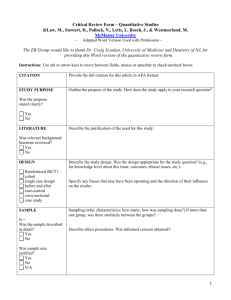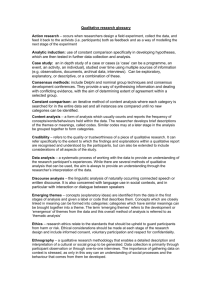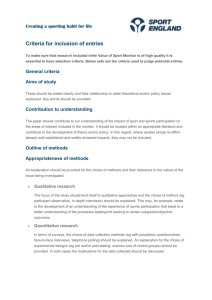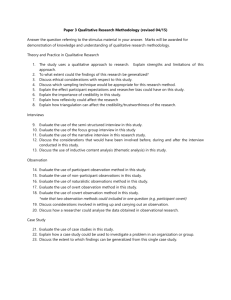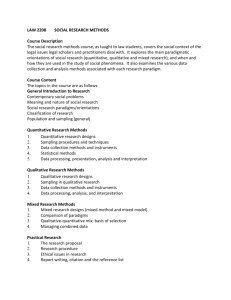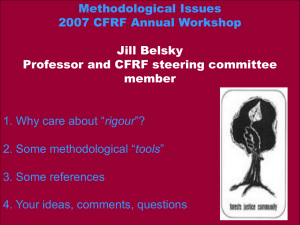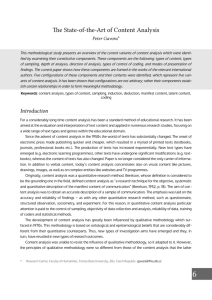English Form
advertisement
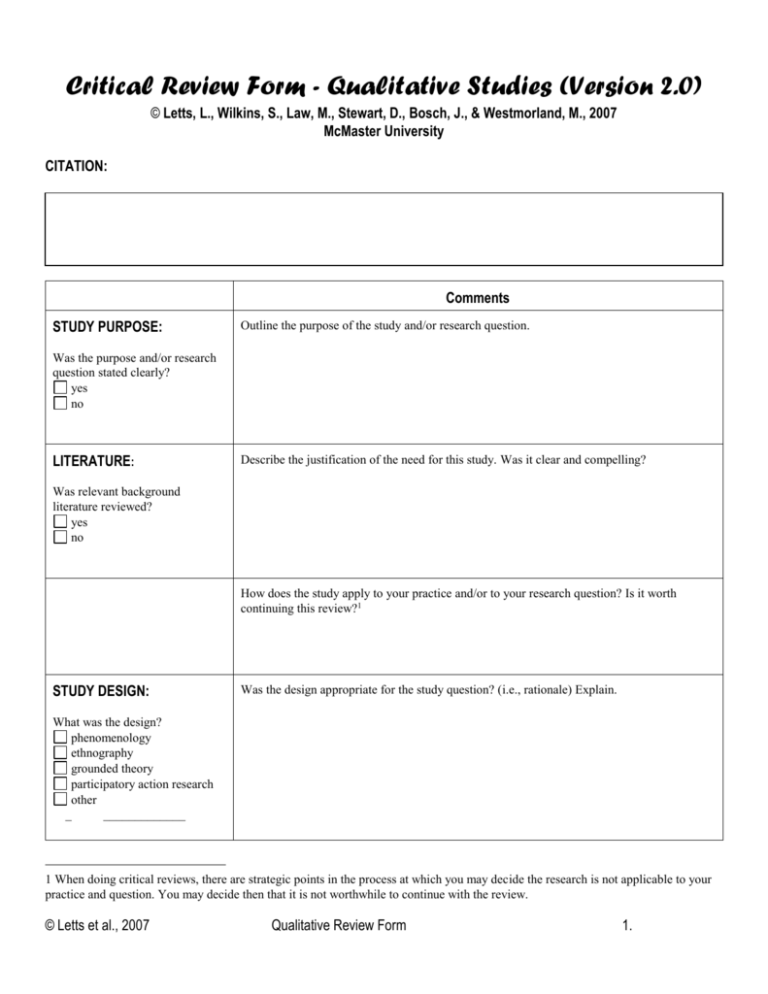
Critical Review Form - Qualitative Studies (Version 2.0) © Letts, L., Wilkins, S., Law, M., Stewart, D., Bosch, J., & Westmorland, M., 2007 McMaster University CITATION: Comments STUDY PURPOSE: Outline the purpose of the study and/or research question. Was the purpose and/or research question stated clearly? yes no LITERATURE: Describe the justification of the need for this study. Was it clear and compelling? Was relevant background literature reviewed? yes no How does the study apply to your practice and/or to your research question? Is it worth continuing this review?1 STUDY DESIGN: Was the design appropriate for the study question? (i.e., rationale) Explain. What was the design? phenomenology ethnography grounded theory participatory action research other _ _____________ 1 When doing critical reviews, there are strategic points in the process at which you may decide the research is not applicable to your practice and question. You may decide then that it is not worthwhile to continue with the review. © Letts et al., 2007 Qualitative Review Form 1. Was a theoretical perspective identified? yes no Describe the theoretical or philosophical perspective for this study e.g., researcher’s perspective. Method(s) used: participant observation interviews document review focus groups other _ _____________ Describe the method(s) used to answer the research question. Are the methods congruent with the philosophical underpinnings and purpose? SAMPLING: Describe sampling methods used. Was the sampling method appropriate to the study purpose or research question? Was the process of purposeful selection described? yes no Was sampling done until redundancy in data was reached?2 yes no not addressed Are the participants described in adequate detail? How is the sample applicable to your practice or research question? Is it worth continuing? Was informed consent obtained? yes no not addressed 2 Throughout the form, “no” means the authors explicitly state reasons for not doing it; “not addressed” should be ticked if there is no mention of the issue. © Letts et al., 2007 Qualitative Review Form 2. DATA COLLECTION: Describe the context of the study. Was it sufficient for understanding of the “whole” picture? Descriptive Clarity Clear & complete description of site: yes no participants: yes no Role of researcher & relationship with participants: yes no What was missing and how does that influence your understanding of the research? Identification of assumptions and biases of researcher: yes no Procedural Rigour Procedural rigor was used in data collection strategies? yes no not addressed Do the researchers provide adequate information about data collection procedures e.g., gaining access to the site, field notes, training data gatherers? Describe any flexibility in the design & data collection methods. DATA ANALYSES: Describe method(s) of data analysis. Were the methods appropriate? What were the findings? Analytical Rigour Data analyses were inductive? yes no not addressed Findings were consistent with & reflective of data? yes no Auditability Decision trail developed? yes no not addressed Describe the decisions of the researcher re: transformation of data to codes/themes. Outline the rationale given for development of themes. Process of analyzing the data was described adequately? yes no not addressed © Letts et al., 2007 Qualitative Review Form 3. Theoretical Connections Did a meaningful picture of the phenomenon under study emerge? yes no OVERALL RIGOUR Was there evidence of the four components of trustworthiness? Credibility yes no Transferability yes no Dependability yes no Comfirmability yes no How were concepts under study clarified & refined, and relationships made clear? Describe any conceptual frameworks that emerged. For each of the components of trustworthiness, identify what the researcher used to ensure each. What meaning and relevance does this study have for your practice or research question? CONCLUSIONS & IMPLICATIONS What did the study conclude? What were the implications of the findings for occupational therapy (practice & research)? What were the main limitations in the study? Conclusions were appropriate given the study findings? yes no The findings contributed to theory development & future OT practice/ research? yes no © Letts et al., 2007 Qualitative Review Form 4.

